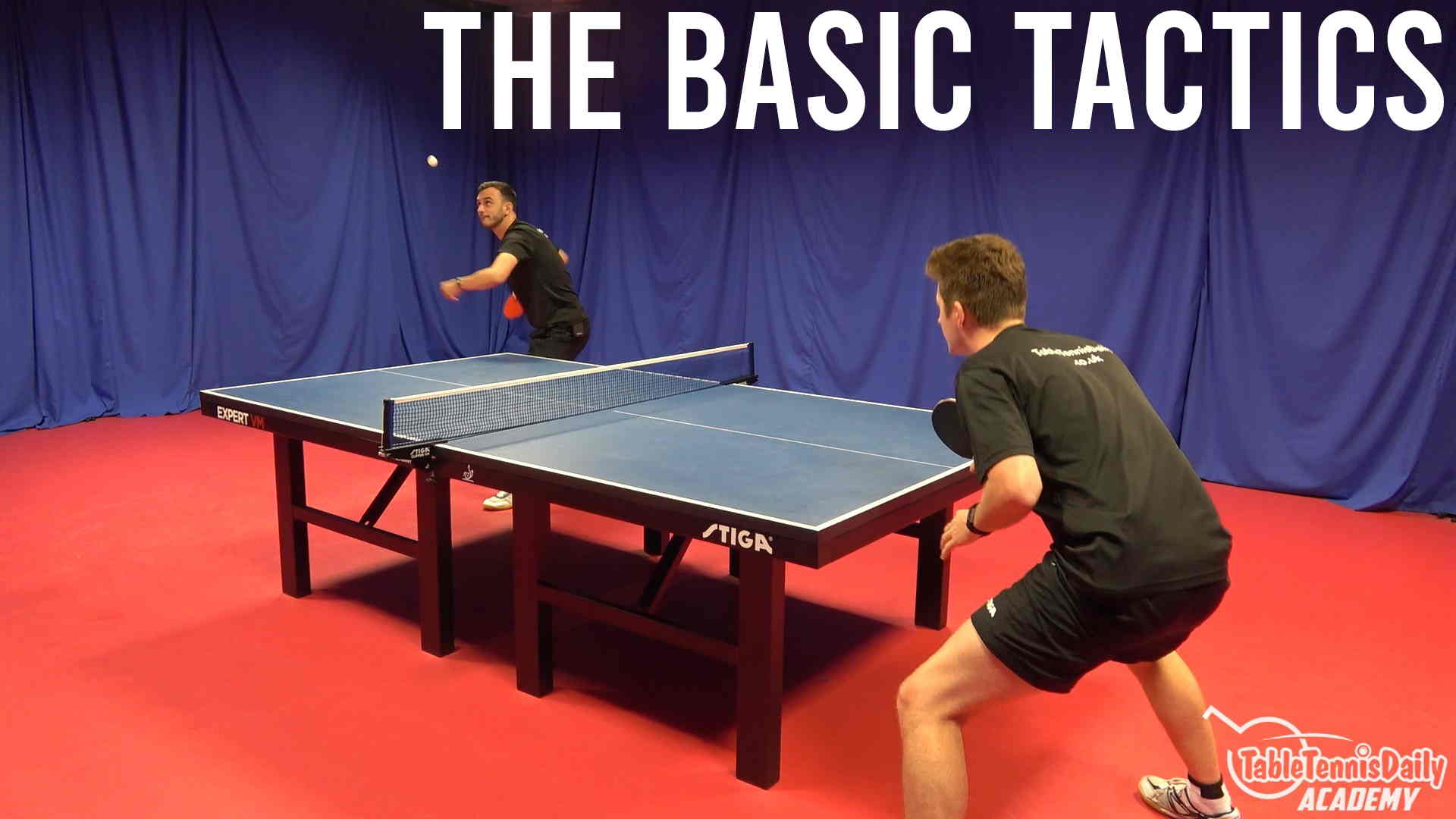A lot is talked about technique when you are improving table tennis. However, we could view good technique as simply the tool we use to apply our tactics. This makes learning what tactics are available and how to apply them equally, if not more, important to improvement and getting better results. So what are some of the most basic tactics in table tennis?

Serve Tactics
Two ways to use your service to win points is through the use of spin and, placement.
High levels of spin are difficult to control and require a high amount of feeling and touch to return. This means that if you can apply enough spin you can dictate the kind of receive the opponent will use, allowing you to win the point (check out the Per Gerell Serving Masterclass for a unique look into how one of the best servers in the world uses this tactic, producing high levels of spin during a serve is a difficult skill to execute so you will need to practise this often.
Your opponent may also adopt a poor receiving position or have poor movement and balance. This allows you to use ball placement to force a weak return. This is an easy tactic to apply if given the opportunity, but requires focus and also time spent developing individual serves that you are confident with under the pressure of a match.
Receive Tactics
There are a lot of options that you can take on the receive of serve (flick, touch, push long, etc) but with a limited amount of time to decide which type of shot to use. Which receive you decide to use will depend on your style of play and your own personal strengths. For example, if you have good touch and control you may want to play close to the net with a touch to keep the opponent out and stop them getting an attack, or use a long push and follow this with a strong attack or counter attack. If you are a fast and powerful player with a strong flick then you should use it when you can to open out the rally and play to your strengths.
Rallying Tactics
The most basic tactic that can be used during a rally is changing the placement and switching the line of play, this is a fundamental part of table tennis matches. Keeping your opponent moving and guessing can win you the point outright or force them to make an error. Additionally, changing the timing and speed that you hit the ball with can disrupt your opponent. For example, you may take the ball slightly earlier or later changing the rhythm of the rally. Similarly, to this is changing the strength or power that you hit the ball with. Here your timing can remain the same but you will hit the ball harder or softer resulting in the ball landing closer to the net or further to the end of the table. Lastly, changing the spin can also be used to force a mistake the opposition, this is more common amongst defenders as attackers predominantly stick with aggressive topspin shots. What’s important to remember here is that variety is so vital to stop your opponents getting comfortable, it’s easy to fall into patterns in matches but if you can mix up your play it makes you unpredictable and harder to beat!
Make sure that your training is not purely technically focused and to introduce using tactics in practice. It is not enough to just have good shots if you cannot use them to your advantage in a match. You need to be able to follow strategies and game plans that are based around your own personal strengths and weaknesses, of course some of this comes with experience. However having a better understanding of basic tactics and how to use them can be learnt and is a big factor to how quickly you improve, so don’t neglect it!
Don’t forget as an Academy member you can ask us about using tactics in your games or any other table tennis questions you have over in Coach Corner. You can also send in your videos for analysis and feedback to help you understand where you can change your tactics or techniques to make improvements!
